Comprehensive Guide to Garden Maintenance in Turnham Green
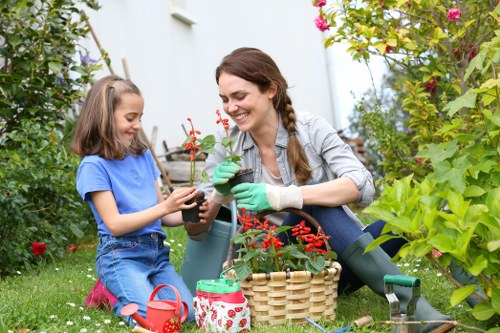
Maintaining a beautiful garden in Turnham Green requires a blend of dedication, knowledge, and the right techniques. Whether you're a seasoned gardener or a novice, understanding the specific needs of your garden can make all the difference. This guide explores essential garden maintenance practices tailored to the unique climate and soil conditions of Turnham Green.
Turnham Green, located in the heart of London, benefits from a temperate climate, which is ideal for a variety of plants. However, the urban environment also presents challenges such as soil compaction and limited space. Effective garden maintenance in this area involves addressing these challenges while maximizing the potential of your green space.
One of the first steps in garden maintenance is soil preparation. Healthy soil is the foundation of a thriving garden. In Turnham Green, where the soil can often be clay-heavy, incorporating organic matter like compost can improve drainage and nutrient content.
Soil Preparation and Health
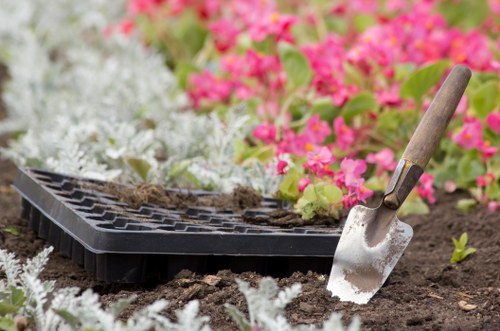
Ensuring your garden soil is in optimal condition is crucial for plant health. Start by conducting a soil test to determine its pH and nutrient levels. Most plants prefer a slightly acidic to neutral pH, ranging from 6.0 to 7.0. If your soil is too acidic or alkaline, amendments like lime or sulfur can help adjust the pH accordingly.
Incorporating compost into your soil not only improves its structure but also adds essential nutrients that plants need to grow. Organic compost enriches the soil with microorganisms that aid in breaking down organic matter, making nutrients more accessible to plants.
Avoiding soil compaction is another key aspect of soil health. In urban gardens, foot traffic and heavy tools can compress the soil, reducing aeration and water infiltration. To prevent this, consider using raised beds or adding organic mulch to maintain soil structure.
Choosing the Right Plants
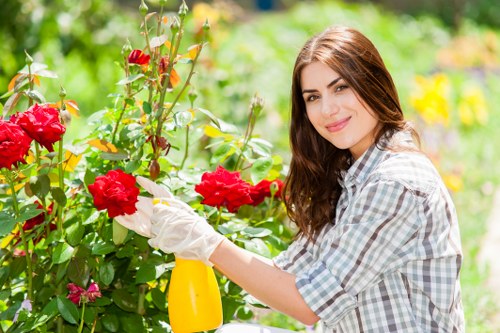
Selecting plants that are well-suited to the Turnham Green climate ensures a more resilient and beautiful garden. Native plants are an excellent choice as they are adapted to the local conditions and require less maintenance. Examples include lavender, foxgloves, and various types of daisies.
Consider the amount of sunlight your garden receives when choosing plants. Some areas may be shaded by buildings or trees, while others bask in full sunlight. Selecting plants that thrive in your garden's specific light conditions will lead to healthier growth and vibrant blooms.
Incorporate a mix of perennials and annuals to provide year-round color and interest. Perennials like hostas and peonies return each year, while annuals such as petunias and marigolds offer seasonal bursts of color.
Watering Techniques
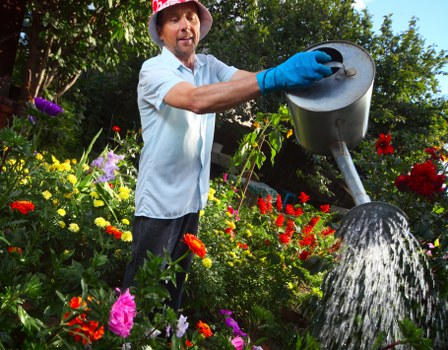
Proper watering is essential for garden maintenance in Turnham Green. The temperate climate generally means moderate rainfall, but it's important to monitor your garden's specific needs. Overwatering can lead to root rot and other fungal diseases, while underwatering can stress plants and reduce their vitality.
Implementing an efficient irrigation system can help maintain consistent moisture levels. Drip irrigation systems are particularly effective as they deliver water directly to the plant roots, minimizing evaporation and water waste.
Mulching is another effective technique to retain soil moisture. Organic mulches like wood chips or straw not only conserve water but also suppress weeds and improve soil quality as they break down.
Pest and Disease Management

Managing pests and diseases is a critical component of garden maintenance. Common pests in Turnham Green include aphids, slugs, and snails, which can damage plants by feeding on their leaves and stems.
Adopting integrated pest management (IPM) practices helps control pest populations while minimizing environmental impact. This approach includes regular monitoring, encouraging beneficial insects like ladybugs, and using organic pesticides when necessary.
Preventing diseases involves maintaining good garden hygiene. Remove dead or diseased plant material promptly and ensure adequate air circulation around plants to reduce the risk of fungal infections.
Pruning and Trimming
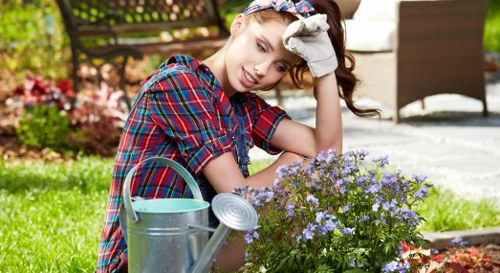
Regular pruning and trimming are essential for maintaining plant health and aesthetics. Pruning helps remove dead or diseased branches, promotes new growth, and improves air circulation within the plant canopy.
Different plants require specific pruning techniques. For instance, flowering shrubs benefit from pruning after they have bloomed, while evergreen bushes may need shaping during early spring.
Using the right tools is important for effective pruning. Sharp, clean scissors or pruning shears ensure precise cuts and reduce the risk of transmitting diseases between plants.
Mulching and Weed Control

Mulching serves multiple purposes in garden maintenance. It helps conserve soil moisture, regulate soil temperature, and suppress weed growth. Organic mulches, such as bark or straw, also break down over time, enriching the soil with organic matter.
Effective weed control is vital for a healthy garden. Weeds compete with desirable plants for nutrients, water, and sunlight. Hand-weeding is an effective method for small gardens, while larger areas may benefit from mulch or landscape fabric to inhibit weed growth.
Applying a layer of mulch around plants can also prevent soil-borne diseases by keeping the soil surface clean and reducing splashing during rainfall.
Lawn Care
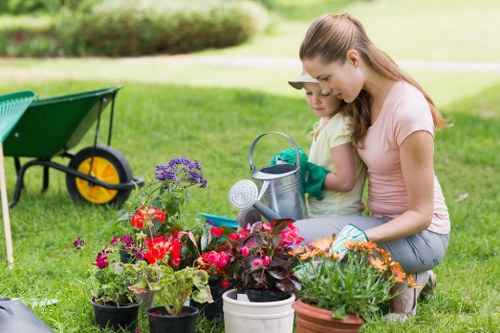
A well-maintained lawn enhances the overall appearance of your garden. Regular mowing, watering, and fertilizing are key practices for lawn care.
Mowing your lawn at the proper height promotes deep root growth and makes the grass more resilient. Generally, maintaining a height of about 2.5 to 3 inches is recommended, depending on the grass type.
Over-fertilization can lead to rapid growth and increased susceptibility to pests and diseases. It’s important to follow a balanced fertilization schedule tailored to your lawn's specific needs.
Seasonal Maintenance Tasks
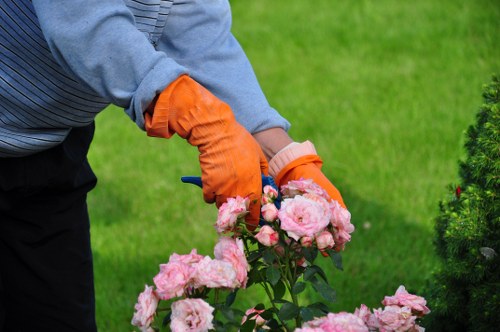
Each season brings unique challenges and opportunities for garden maintenance in Turnham Green. Spring is the time for planting new flowers and vegetables, as well as preparing the soil for the growing season.
Summer maintenance involves regular watering, weeding, and monitoring for pests and diseases. It's also a good time to stake tall plants and support their growth.
Autumn focuses on clearing fallen leaves, preparing perennials for winter, and planting bulbs for spring blooms. Winter maintenance includes protecting sensitive plants from frost and planning for the next gardening season.
Using Sustainable Practices
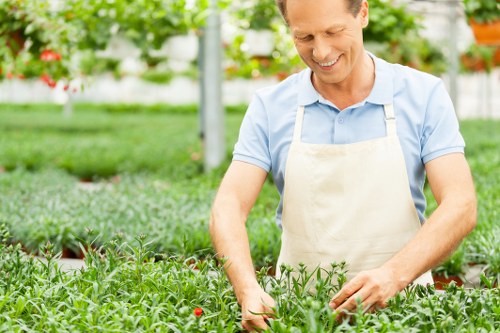
Embracing sustainable practices in garden maintenance not only benefits the environment but also creates a healthier garden. Composting kitchen scraps and garden waste reduces landfill use and provides rich organic matter for your soil.
Rainwater harvesting systems can be installed to collect and store rainwater for irrigation, reducing dependence on municipal water supplies. This is especially beneficial during dry spells.
Choosing native plants and drought-resistant varieties minimizes water usage and supports local biodiversity, promoting a balanced ecosystem in your garden.
Implementing Efficient Garden Design
An efficient garden design enhances both the functionality and beauty of your outdoor space. Incorporating elements like pathways, seating areas, and garden structures adds interest and makes maintenance easier.
Choosing the right layout ensures that plants receive adequate sunlight and are easily accessible for care. Raised beds and vertical gardening can maximize space in smaller gardens, providing ample room for a variety of plants.
Incorporating companion planting techniques can also improve plant health and reduce pest issues. For example, planting marigolds alongside vegetables can deter certain pests naturally.
Professional Garden Services in Turnham Green
For those who prefer expert assistance, professional garden maintenance services in Turnham Green offer comprehensive care tailored to your garden's needs. These services include regular maintenance tasks, seasonal clean-ups, and specialized treatments for plant health.
Hiring a professional gardener ensures that your garden benefits from expert knowledge and experience, leading to a more vibrant and resilient outdoor space.
Additionally, professional services can provide valuable advice on plant selection, garden design, and sustainable practices, helping you create a garden that thrives year after year.
Conclusion
Effective garden maintenance in Turnham Green involves a combination of proper soil care, plant selection, watering techniques, pest management, and sustainable practices. By understanding the specific needs of your garden and implementing these techniques, you can create a beautiful and thriving outdoor space.
Whether you choose to maintain your garden yourself or enlist the help of professional services, the key to success lies in consistent care and a willingness to adapt to your garden's evolving needs.
Contact us today to learn more about our garden maintenance services and take the first step toward transforming your Turnham Green garden into a lush, vibrant oasis.
